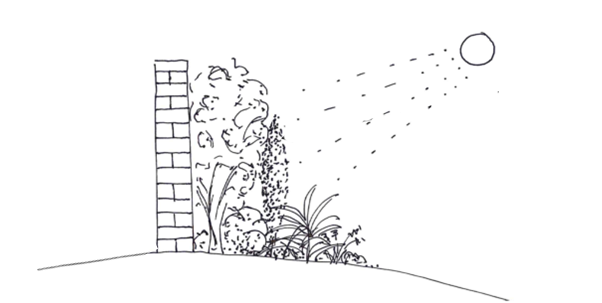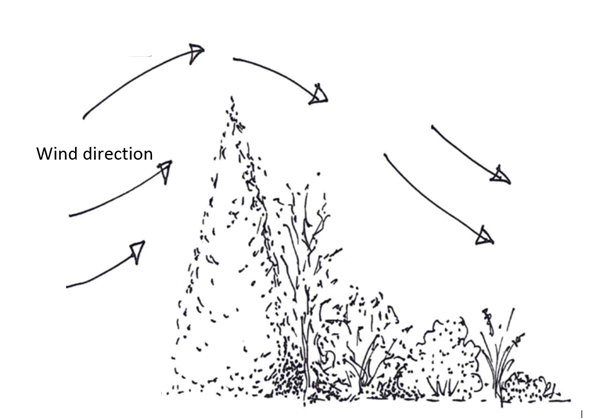Part 4: Planting design
3. Microclimates
Microclimates can be created by careful planning of planting.
Dense planting and consideration to light and shade naturally work together to create a shaded, cooler, moist site for plants that will thrive in this environment.
Deciduous trees, planted as a screen to provide shade from the sun in summer, allow light to penetrate through the bare branches through the winter months and can provide a cool (but not cold) environment throughout the year.
Large and densely planted shrubs can act as a wind break, reducing the wind's velocity, especially if planted against the prevailing wind, creating a sheltered area that is not constantly cooled by wind force. Evergreen screens can provide a shelter from wind and provide shade to an area throughout the year.
Planting against a south facing wall, or hedge, will create a micro-climate. The wall will absorb and radiate heat, and provide wind shelter.

Amber Crowley / public domain
Planting tall plants to provide shelter from the prevailing winds, protects the plants in the foreground of a border.

Amber Crowley / public domain
High levels of sunlight to a given area can be reduced by planting that provides dappled shade.
Sheltered areas that are warmer than the surrounding area can be created.
A canopy of plants can create an area that protects plants grown underneath from frosts.